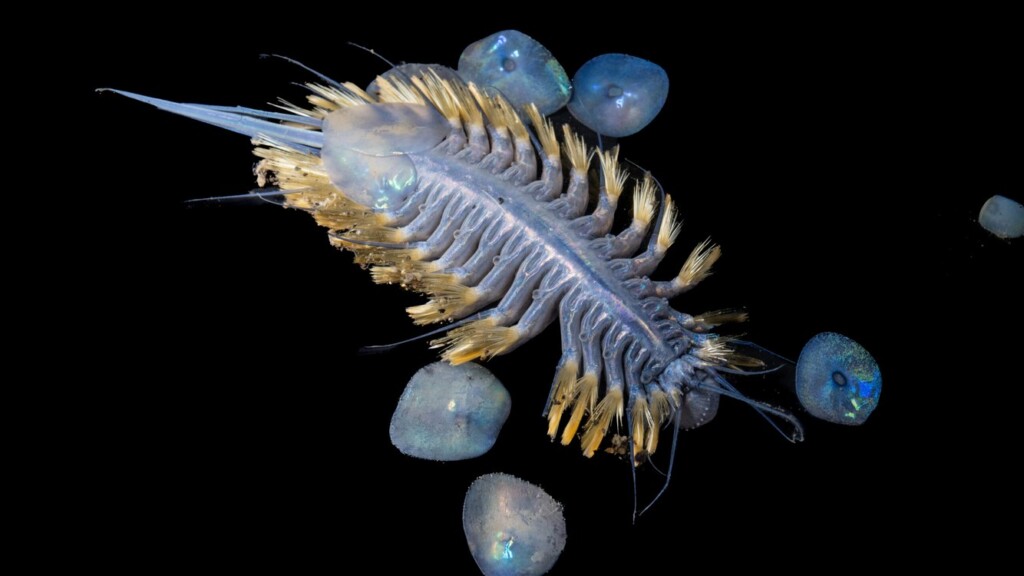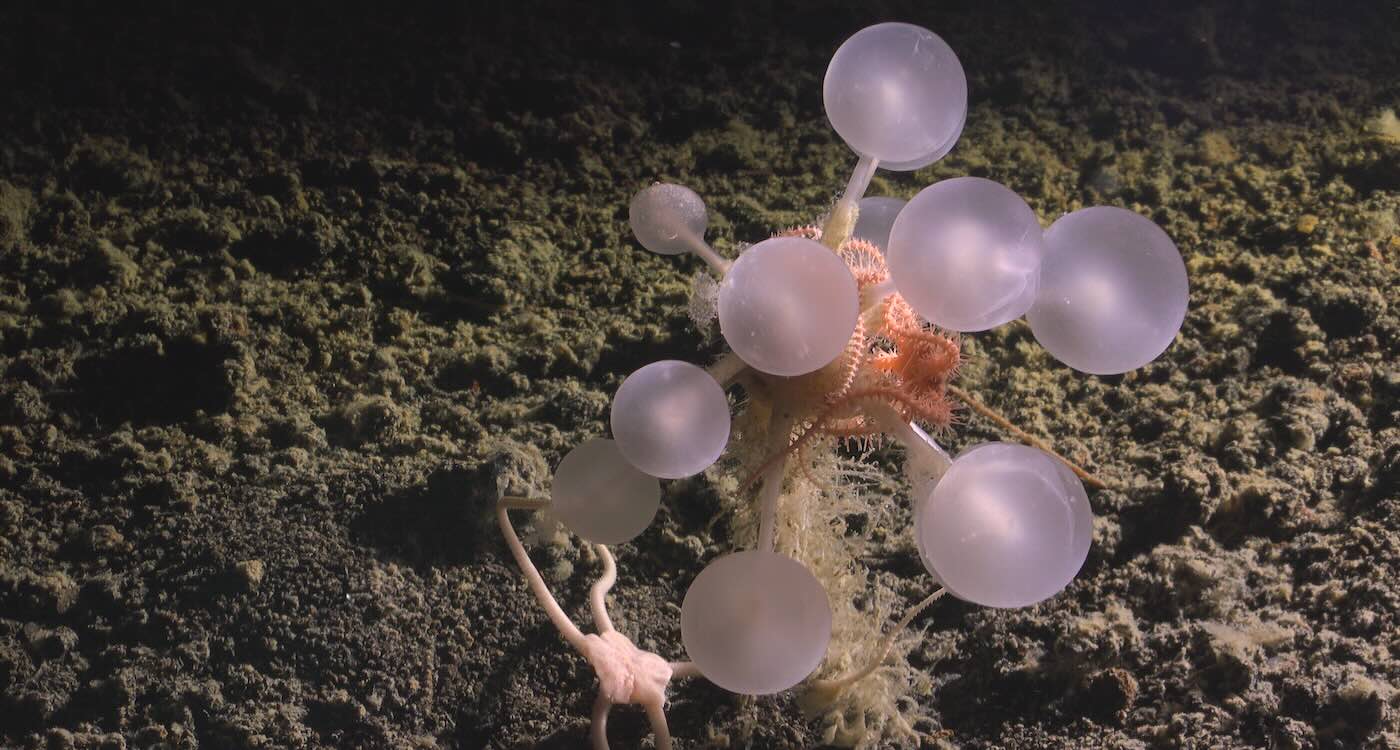 New Carnivorous death ball sponge found 3601 meters deep east of Montagu Island – Credit: The Nippon Foundation-Nekton Ocean Census/Schmidt Ocean Institute ©2025
New Carnivorous death ball sponge found 3601 meters deep east of Montagu Island – Credit: The Nippon Foundation-Nekton Ocean Census/Schmidt Ocean Institute ©2025
30 previously unknown deep-sea species, including the carnivorous “death-ball” sponge, have been confirmed from one of the most remote parts of the planet.
The animals were collected during a pair of 2025 research cruises to the waters around Antarctica which yielded stunning discoveries in their own right.
But the honor of the discovery and the naming of the death-ball sponge belongs to the Nippon Foundation of Japan, conducting what they called the Nekton Ocean Census.
At the conclusion of the trip in August, the researchers got to work at the Southern Ocean Species Discovery Workshop, where an international team of taxonomists fast-tracked species verification by triaging, imaging, and comparing specimens on site at the University of the Magallanes, in Punta Arenas, Chile.
A standout discovery was this new predatory sponge (Chondrocladia sp. nov.) Its spherical form is covered in tiny hooks that trap prey, a clear contrast to the gentle, passive, filter-feeding undertaken by most sponges.
‘Zombie worms’ (Osedax) were also observed. Although not thought to be new to science, much remains to be learned about these worms—which have no mouth or gut and rely on symbiotic bacteria to break down fats inside the bones of whales and other large vertebrates.
The Southern Ocean expeditions also revealed new armored and iridescent scale worms (Eulagisca sp. nov.), previously unknown species of sea stars (Brisingidae, Benthopectinidae and Paxillosidae); new crustaceans, including isopods and amphipods, with material under review that may represent a new amphipod family; and rare gastropods and bivalves adapted to volcanic and hydrothermal-influenced habitats.
Additional possible new species, among them black corals and a potential sea-pen genus, are undergoing expert assessment.
 A new species of iridescent scale worm, – credit, Jialing Cai The Nippon Foundation Nekton-Ocean Census / Schmidt Ocean Institute © 2025
A new species of iridescent scale worm, – credit, Jialing Cai The Nippon Foundation Nekton-Ocean Census / Schmidt Ocean Institute © 2025
The fact that all of this has been released just three months after the conclusion of the voyage is down to this new ocean-to-lab model trialed at the Species Discovery Workshop. It was described by the Nippon Foundation as a newer, faster, and more collaborative approach to species discovery for the global community, addressing the major roadblock in traditional taxonomy of limited funding and capacity that leaves samples sitting in jars for years.
“Advanced tools—from precise seafloor mapping to high-definition ROV imagery—allow us to explore and gather data from places never seen before by humans,” said Dr. Jyotika Virmani, Executive Director of the Schmidt Ocean Institute, which organized both the research cruises, wrote in a statement.
THE WONDERS OF THE DEEP: First-Known Sighting of a ‘Massive’ Antarctic Squid is Caught on Camera During Nat Geo Expedition
“The goal we share with Ocean Census to accelerate discoveries has resulted in the first confirmed sighting of a juvenile colossal squid and new species, and exemplifies what becomes possible when technology, ship time, and a global science network work as one.”
“The Southern Ocean remains profoundly under-sampled. To date, we have only assessed under 30% of the samples collected from this expedition, so confirming 30 new species already shows how much biodiversity is still undocumented,” said Dr. Michelle Taylor, Head of Science at The Nippon Foundation-Nekton Ocean Census.
“By coupling expeditions with species discovery workshops, we compress what often takes more than a decade into a faster pathway while maintaining scientific rigor by having world experts involved.”
DEEP SEA STORIES: Rare ‘Doomsday’ Fish Surfaces in California–Just the 20th Discovered in the State Since 1901
The researchers from the Ocean Census traveled aboard the RV Falkor, operated by the Schmidt Institute, to a pair of locations. The first was a series of hydrothermal volcanic vents near the South Sandwich Islands, and the second was a section of the Bellingshausen Sea made available after an iceberg the size of Chicago broke off and revealed a totally isolated marine community.
The South Sandwich cruise included the first ever sighting of a colossal squid, though it was only a juvenile.
SHARE The Death-Ball Sponge’s Debut Into The Scientific Record…

